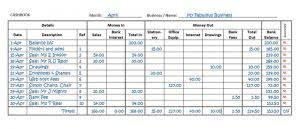
But if you have a high quick ratio, it can also show that you’re holding onto reserves that may be better used as investments into your business. When calculating your quick ratio, you don’t want to add in every asset of your business. Another advantage of liquidity ratios is their utility in assessing a company’s financial health and risk level.
For an item to be classified as a quick asset, it should be quickly turned into cash without a significant loss of value. In other words, a company shouldn’t incur a lot of cost and time to liquidate the asset. For this reason, inventory is excluded from quick assets because it takes time to convert into cash. Perhaps the most significant source of risk with the quick ratio lies in the accounts receivables category. To use the real-world example, the chart of Tesla (TSLA) data above gives a sense of the normal disparity between quick and current ratios.
Why You Can Trust Finance Strategists
The current ratio does not inform companies of items that may be difficult to liquidate. It may not be feasible to consider this when factoring in true liquidity, as this amount of capital may not be refundable and already committed. In the fast-paced world of finance, understanding the Quick Ratio is vital for investors and businesses. Often referred to as the ‘Acid-Test Ratio,’ this metric offers insights into a company’s ability to meet short-term obligations.
Liquidity Coverage Ratio (LCR): Definition and How To Calculate – Investopedia
Liquidity Coverage Ratio (LCR): Definition and How To Calculate.
Posted: Sun, 26 Mar 2017 00:06:26 GMT [source]
If a company has a current ratio of less than one, it has fewer current assets than current liabilities. Creditors would consider the company a financial risk because it might not be able to easily pay down its short-term obligations. If a company has a current ratio of more than one, it is considered less of a risk because it could liquidate its current assets more easily to pay down short-term liabilities.
Quick Ratio Explained: Definition, Formula, and Example – Recommended Reading
As mentioned earlier, the quick ratio is not the only measure of a firm’s liquidity. Another key indicator is the current ratio, which includes quick assets, as well as inventory and prepaid expenses. It is important to note that the quick ratio is only one measure of a company’s financial health. Things like opening a new plant or ordering a large batch of materials (which indicate strong expected demand) are going to register as liabilities first.
Current liabilities are a company’s short-term debt obligations, typically due within the next year. It includes accounts payable, short-term loans, and the current portion of long-term debt. Companies need to have sufficient liquidity to pay these current liabilities as they come due. Your quick ratio helps you stay on top of your ability to pay quick ratio is another commonly used term for the your current liabilities. In general, a higher quick ratio is better because you’re in a good position to pay off your current liabilities with assets that are easy to convert to cash. The lower the ratio gets, the more the company leans on inventory and similar assets to cover liabilities, which can cause a financial crunch if sales slow.
Users of Liquidity Ratios
As of January 28, 2023, Macy’s had cash and cash equivalents of $862 million, receivables of $300 million, and total current liabilities of $4.861 billion. You may have a high quick ratio if you have a large amount of accounts receivable. That can show that your customers aren’t paying up in a timely manner, which can cause a cash flow shortage.


